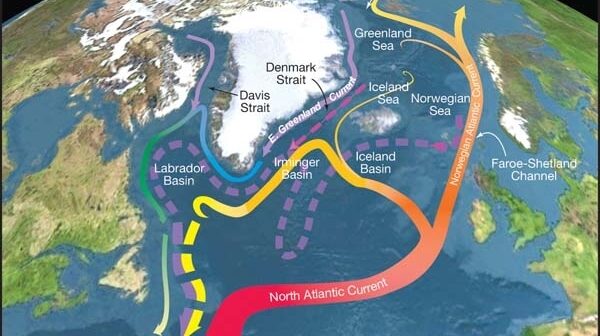The crucial network of currents in the Atlantic, including the Gulf Stream, is slowing down, and is now the weakest it’s been in more than 1,000 years, according to a new study published in the British journal Nature Climate Change.
The slowdown is reaching a tipping point with dramatic consequences, including a more rapid rise in sea levels along the east coast of the United States, colder temperatures in Europe, reduced rainfall in parts of Africa, and even more monsoons in the tropics.
The study looked at the circulation patterns of the Atlantic Meridional Overturning Circulation, or AMOC, the conveyer belt that carries warm salt water from the Caribbean up to northern Europe and then sends colder water back south along the ocean floor.
The researchers found that global warming caused by humans has created “an almost complete loss of stability” in the system that drives the currents. As a result, the AMOC “is approaching a tipping point at which it would abruptly transition to a much slower state,” said Niklas Boers, a scientist at the Potsdam Institute of Climate Impact Research. That slower state, he said, represents “a critical threshold beyond which the circulation system could collapse.”
For his part, Alex Hall, director of the Center for Climate Change at UCLA, who was not involved in the study, told The New York Times, “We’re poking a beast. But we don’t know the reaction we’ll cause.”
The study said many factors were involved in disrupting the AMOC, including higher ocean temperatures in the Atlantic, a freshwater inflow from melting of the Greenland ice sheet, melting sea ice, and increasing precipitation. Read more:




